
It should be no surprise that Chillies are used in Brazilian cooking. The fact that Brazil contains 65 % of the Amazon basin is a clue to how close this country is to the Chilli. It is widely accepted that many varieties of Chillies, while now found worldwide, are native to the Amazon basin *. While neighbouring Bolivia is thought to be one of the countries where Chillies originally started, Brazil would not have been far behind in being a place where they could first be found and consumed
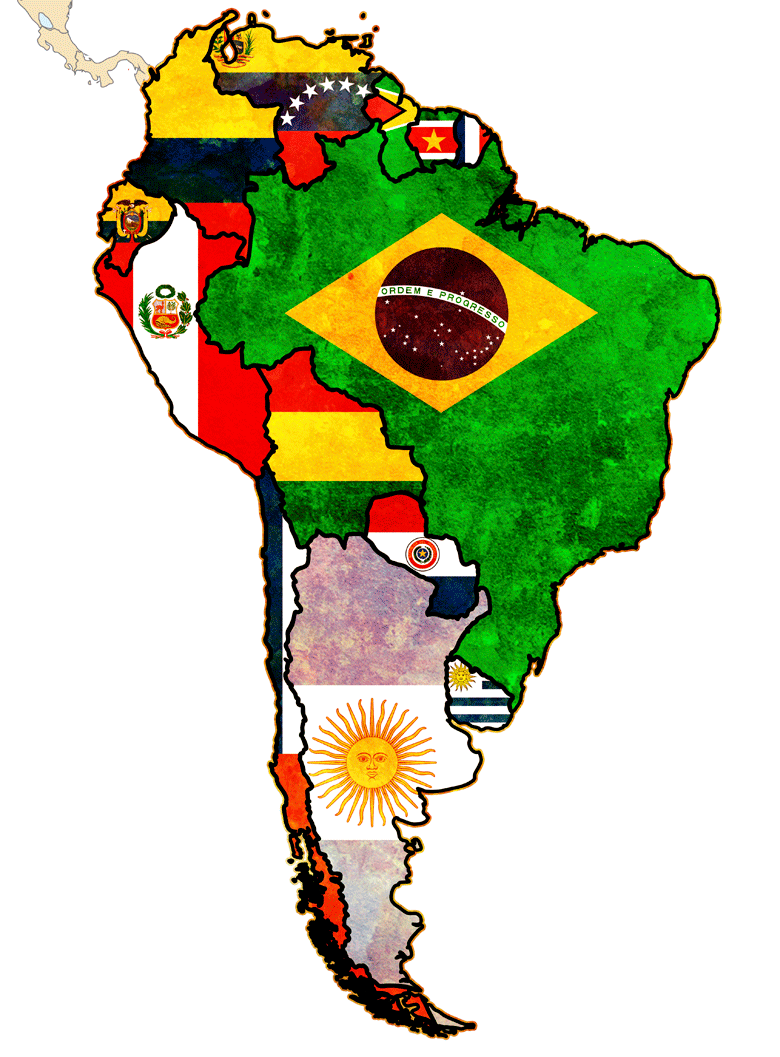 Before the Portuguese colonisation of Brazil, the country was inhabited by as many as 2000 nations and tribes. These were semi-nomadic people who relied on hunting and gathering for their subsistence. It is believed that these people began spicing their food thousands of years ago, using Chillies found in the wild. They had started the tradition of using Chillies in Brazilian food that is still being followed today.
Before the Portuguese colonisation of Brazil, the country was inhabited by as many as 2000 nations and tribes. These were semi-nomadic people who relied on hunting and gathering for their subsistence. It is believed that these people began spicing their food thousands of years ago, using Chillies found in the wild. They had started the tradition of using Chillies in Brazilian food that is still being followed today.
After 1500, Portugal began shipping slaves from West Africa to Brazil. These slaves, who were accustomed to eating spicy food in their motherland, immediately took to the Chillies they found in their new surroundings. While there were many varieties, they liked one so much that they named it after a spice they had used back home. Thus another reason for the use of Chillies in Brazilian cooking today
The name that they gave it “ Malagueta” is from the Portuguese spelling of a spice called Malegueta spice that they had used in Africa. Also known as Grains of Paradise, Malegueta spice is native only to West and Northern Africa. It is unrelated to the Chilli and has a flavour resembling that of black pepper.
After the Portuguese arrival in Brazil, people from many other European, Middle Eastern and Asian countries settled in the country. Immigrants from amongst others from Germany, Italy, Lebanon and later Japan, all added their influence to the fusion of Amerindian / West African/ Portuguese cuisine that had developed in the country. Many of the dishes found in this fusion food contained – you guessed it – Chillies.
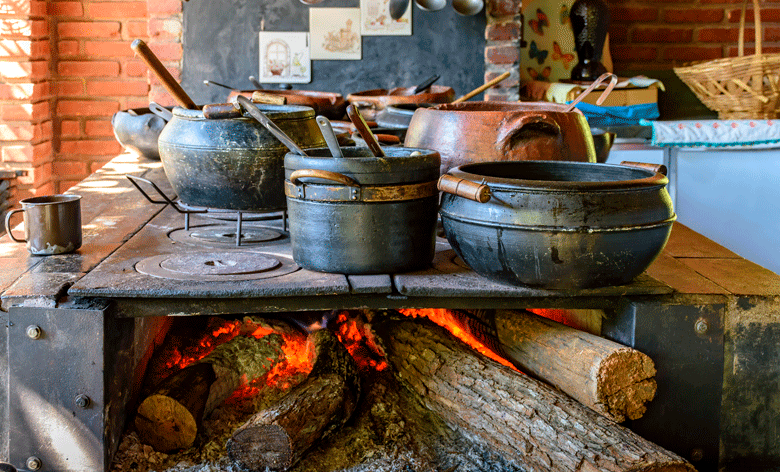 Some background
Some background
Today, except for a few northern states, Chillies are widely used in Brazilian cooking . Brazil, however, is a big country. There is not what can be recognized as a national cuisine, but rather an assortment of regional cuisines and specialities that can be directly connected to the original ethnicity of the people living in these areas.
For example, in the Bahia region, the food's spicy character has been shaped by the influences of Portuguese, West African and indigenous people's cuisine.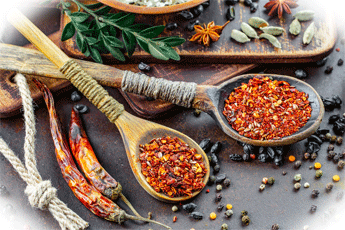 Dishes like Efó ( spinach soup with dried shrimp, garlic, onion and chillies), Vatapá ( an Afro /Brazilian dish made with dried shrimp, bread, nuts, coconut milk and Chillies), Moqueca de Peixa ( Brazilan seafood stew with Chillies), and spicy Bobó de camarão ( shrimp stew ) are all examples of local cuisine where the Chilli is used in Brazilian cooking
Dishes like Efó ( spinach soup with dried shrimp, garlic, onion and chillies), Vatapá ( an Afro /Brazilian dish made with dried shrimp, bread, nuts, coconut milk and Chillies), Moqueca de Peixa ( Brazilan seafood stew with Chillies), and spicy Bobó de camarão ( shrimp stew ) are all examples of local cuisine where the Chilli is used in Brazilian cooking
In many other recipes in Bahia, Chilli sauces are also widely used as a condiment instead of adding Chillies as an ingredient. While there are many different variants of these sauces, a typical recipe for making a Mohlo de Pimenta Baiaino (Bahian Chilli sauce) could run along the same lines as Piri Piri Sauce, which is popular in Portugal and Mozambique. This is an important use of Chillies in Brazilian cuisne
Other examples of states in Brazil where Chillies are extensively used include Goiás and the State of Pará, where significant quantities of Malagueta, Goat peppers and Tabasco chillies are consumed.
Does Brazil have a national dish with Chillies?

Feijoada
Feijoada (a flavourful, slow-simmered bean and meat stew) is probably the closest that Brazil has to a national dish. It is very much loved in most regions in the country.
Many regional differences are found in Feijoadas preparation. In some states ( notably Bahia), Feijoada may be prepared with Chillies or served with Chilli sauce. In other states In Brazil , Chillies may not be used in the cooking of this dish at all.
Feijoada, which gets its name from "feijão", the Portuguese for bean. And that is what it pronominally is - a bean stew. It is a bean stew with a difference though! In addition to the beans, this stew is also jam-packed with chunks of salted pork, beef, smoked sausages and strips of jerked beef. These then slow-cooked with wine, onions, garlic, bay leaves, garlic, and sometimes vegetables like Kale, cabbage, carrots or pumpkin. Plantain may also be added.
beans, this stew is also jam-packed with chunks of salted pork, beef, smoked sausages and strips of jerked beef. These then slow-cooked with wine, onions, garlic, bay leaves, garlic, and sometimes vegetables like Kale, cabbage, carrots or pumpkin. Plantain may also be added.
Traditionally, tougher cuts of meat have been used to make Feijoada. These include pig's ears, trotters and tails. It is precisely because the tougher cuts of meat take so much time to become tender that so much flavour develops during cooking. The meat releases juices, and the sauce that everything is cooking in reduces. All this has the effect of concentrating the flavours . Something every good cook should aim for, whether cooking a stew, sauce or curry.
Something else happens when tough meats are used to make Feijoada. These meats usually have a lot of connective tissue that is rich in collagen. Long slow cooking breaks this collagen into gelatine . This results in the sauce becoming even richer in flavour and coming thicker. It also adds an attractive sheen to the dish. To top all of this , the beans will absorb all this flavour and add additional thickness to the dish as they soften. All of these processes ( which need at six to eight hours) ) will lead to the rich and flavourful dish the Brazilians adore. ( and for that matter, almost everyone else who has eaten it) It is soul food of the highest order
Where else are Chillies used ?
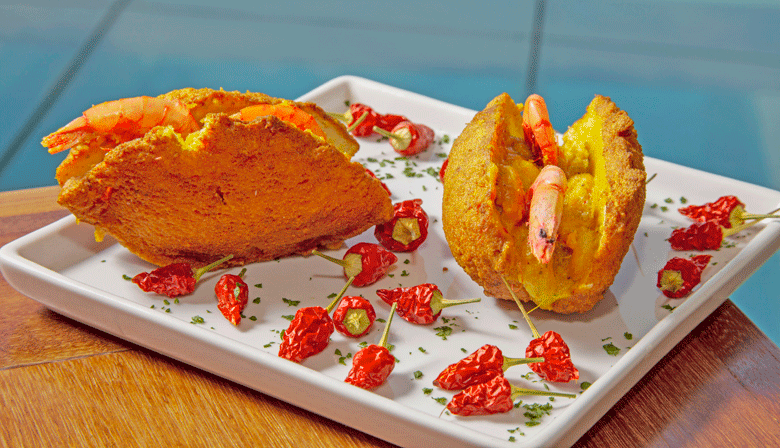
How are Chillies used in Brazilian cooking?
Hot sauces and Chilli oils. It is the norm that most households in Brazil make their own hot sauces and Chilli oils. It is a staple for the use of Chillies in Brazilian cooking. The recipes for the hot sauces are traditionally well-kept secrets that are passed from generation to generation. The Chillies used to make these sauces include Dedo de Moca, Malagueta and Pimenta Murupi (and many others).
Fresh Chillies . Fresh Chillies are used in Brazilain cooking to make dishes like Salada com pimenta Biquinho (green salad with Chillies), Salada de manga com pimenta (Mango salad with chillies) and Guacamole ( Avocado mash with chillies ). The Biquinho and Cumari Pepper are particularly prized in salad and fresh salsa type dishes because of their sweetness.
Stuffed: Another great use of Chillies in Brazilian cooking. Here, Chillies have their inner piths and seeds removed, and are then typically stuffed with cheese. Sometimes they are breaded as well . Most are then grilled in the oven.
Pimenta Crocante Recheada ( Stuffed crispy chillies made with Dedo de moça) , Pimenta Recheada com Carne Seca e creme de queijo ( Chillies with dried meat and cream cheese); Pimenta cambuci recheada (Stuffed Cambuci Chillies) and pimenta recheada com queijo coalho ( Chillies stuffed with cheese)
Stews and Soups. Brazil, as a country, loves this type of food. The national dish, Feijoada, would not be the same without Chillies. It is typically served with a Feijoada hot sauce ( Molho-de-pimenta-para-feijoada) or with pickled Chillies. 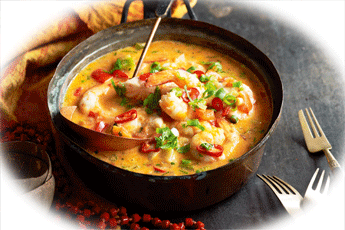
Likewise, other iconic Brazilian plates like Vatapá and Moqueca Capixaba ( an iconic use for the use of Chillies in Brazilian cuisine) would definitely be lacking if they did not contain Chillies. Sopa de feijoa preto (black bean soup) Sopa de galinha com pimenta (chicken soup with chilli ) are other great examples where Brazil uses Chillies in soups.
Pates: Biquinho, Calabresa, Dedo de moça, Cambuci and Pimenta de cheiro are used to make pates and dips like Patê de pimenta calabresa com requeijão e uva-passa (Pepperoni pâté with curd and raisin) Patê de pimenta dedo-de-moça ( Dedo-de-moça Patê) and Patê de pimenta Biquinho ( Birds beak chilli pâté)
Desserts: Chillies are used to flavour ice cream and mousse ( particularly chocolate ). A typical recipe for a dessert made in Brazil using Chillies is Mousse de chocolate com pimenta ( Chocolate mousse with Chillies)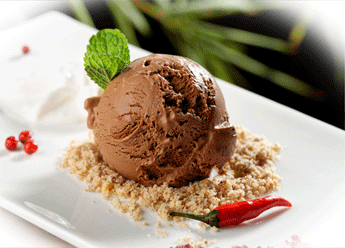
Preserved: Chillies are preserved in vinegar or oil ( or a combination of the two) in recipes like Conserva de Pimenta em Azeita (canned chillies in olive oil)and Conserva de Pimenta em Azeita e Vinagre ( canned chillies in olive oil and vinegar). Pimenta Murupi, Dedo de moça, Malaguetas, Biquinho and many others are made into great pickled Chillies like Conserva de pimenta e Biquinho no Vinagre (pickled Biquinho Chillies in vinegar) and Conserva de pimenta Dedo de moça (pickled little ladies finger Chillies The liquid from these dishes is used to add flavour to Brazilian cooking.
Jams and jellies : Great tasting jams and jellies are made using chillies like Pimenta Biquinho (Geleia de pimenta biquinho) , Dedo de Moca ( Geleia de pimenta Dedo-de-moça com maçã) and Cumari ( Geleia de pimenta cumari com pimentão) . Pepperoni flakes are used in Geléia de tomate com pimenta (Tomato jam with Chillies).
Varieties of Chillies in Brazil
 Brazilian Chillies
Brazilian Chillies
With the Amazon basin being the birthplace of Chillies, it is not surprising that Brazil has such a wide variety across a broad spectrum of different families and classes. These Chillies come in a variety of shapes, sizes, flavours and heat levels.
With this in mind, it would be impossible within this article's scope to name them all. The following are some of the Chillies more closely associated with their use in Brazilian cooking.
Dedo de moça (Young ladies finger pepper). This Chilli and the Malagueta are the most popular hot peppers in Brazil. It is an indispensable ingredient for many of the countries' fantastic dishes. The Dedo de Moça can reach a height of 1 meter in height and 60 cm in width. Its pods begin green, and then cycle through yellow and orange, and finally turn a deep red. These Chillies are 6-8 cm in length.
It has a Scoville rating of 10000 to 15000 SHU. Its mild and complex smoky flavour imparts a great taste to Brazilian dishes like Moqueca Capixaba (Brazilian fish stew), Feijoada (Pork, bean and sausage stew) and Camarões e pimenta (prawns with chillies).
Besides being used in restaurant-style recipes, the Dedo de Moça is an everyday chilli in Brazil. It is used in households to add flavour to sauces like tomato, mushroom, or even bechamel. They are often pickled (Pimenta Dedo de Moça em Conserva), made into hot sauces (Molho de Pimenta), preserved in oil, and dried. In its dried format, it is known as Calabresa pepper.
Malagueta Chilli.
The Malagueta Chilli is probably the most used Chilli in Brazilian , with Dedo de Moca a close second. It has a Scoville rating of 60000 to 100000 SHU. The Malagueta grows to between 30 and 35 inches in a densely leafed bush, with pods that point upwards. The pods typically go through various maturation stages, changing from green through yellow and orange, and finally turning red. The Chillies are between 1 inch and two inches long. Malagueta Chillies from the wild are particularly prized because of their increased heat and flavour.
It is used to make favourites like Moqueca de peixe (Brazilian fish stew), Caruru (Traditional stew made with dried shrimps, okra, nuts and Chillies, Frango churrasco (Spicy grilled chicken) and Vatapá ( stew-like mash made with breadcrumbs, shrimp, coconut milk and Chillies and spices). Many of these dishes are a fusion of West African and Portuguese cuisine.
In Brazil, the larger Chillies (approximately 2 inches) are called Malaguetão, with the smaller ( up to 1 inch) by the name of Malaquetinha. Apparently, they are not different, but merely the same chilli at a different stage in its growth.
Pimenta Pitanga. The Pitanga Chilli falls under the Capsicum baccatum species. This term means berry like. It is a species that it shares with many other “Aji” Chillies. The Pimenta Coração de Galinha (Chicken heart Chillies) and Aji Amarillo, Peru's most popular Chilli, are examples. These types of Chillies have been eaten in this part of the world for thousands of years.
 It has a Scoville rating of between 30000 and 50000 SHU. The Pitanga Chilli is also known as the Brazilian Starfish Chilli . It gets its name from its shape resembling that of a Pitanga ( starfish from Brazil). The fruit has a squat appearance, with a diameter of one to two centimetres in diameter and two centimetres in height. It has ridged sides
It has a Scoville rating of between 30000 and 50000 SHU. The Pitanga Chilli is also known as the Brazilian Starfish Chilli . It gets its name from its shape resembling that of a Pitanga ( starfish from Brazil). The fruit has a squat appearance, with a diameter of one to two centimetres in diameter and two centimetres in height. It has ridged sides
The fruit ripens from green to yellow, and will finally turn red if allowed to ripen fully. It has a sweet, fruity flavour, said to slightly resemble that of an apple. The Pitanga is used in salads and salsas, but also goes well with seafood dishes like Brazilian Ceviche and Peixe ao Molho de Pitanga (Fish with Pitanga sauce and Lagosta ao Molho de Pitanga (Lobster with Pitanga) It is also good to use to make pickled peppers and Chilli chutney (Chutney de Pimenta-Pitang)
Pimenta-de-bode. (Goats pepper ) is a chilli most popular in the Goiás state. It has a Scoville rating of between 15000 and 30000 SHU. Its pods are round and flattened, and about 2 cm in size. The fruit ripens from green to an orange colour and matures to redder colour. It has a fruity flavour.
Pimenta-de-bode gets its name because it has a very distinctive sharp smell . It is described as having a distinct odour in the same way you might associate a particular smell when describing a goat. The taste is sharp and fruity. It is widely canned because of its uniform shape but is also gaining rapid popularity amongst chefs in fine dining and the making of speciality jams and relishes. Typical dishes where the Pimenta-de-bode gets used as a Chilli in Brazilian cooking include Baião-de-dois (Bean, cheese and Chilli stew), Tutu de Feijão ( Brazilian refried beans) and to flavour rice. It is an everyday spice in many households.
* The C annuum species of Chillies is native to Mexico.
Finally
As previously mentioned, this list is not extensive. Chillies like Pimenta Biquino, Fidalgo. Pimenta-de-cheiro, Pimenta Coração de Galinha, Pimenta Cumar Pimenta Cambuci, and many others are also used in Brazilian cooking with Chillies.
Read more ; Spicy Brazilian food with Chillies
Image credits
Varieties heading. agriculturasp /via Flikr/ CC BY-2.0 Dedo de Moca. Image credit: Secretaria de Agricultura e Abastecimento/Flikr/CC BY 2.0
